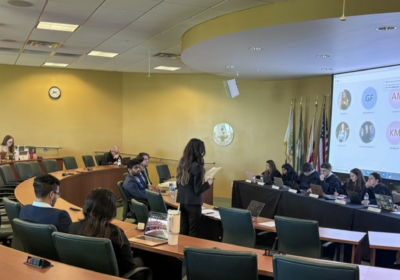Merger bill goes to governor

A campus consolidation would mean all three current campuses will operate under one umbrella. ORACLE PHOTO/CHAVELI GUZMAN
The consolidation of USF’s three campuses into a single university is one step away from being official after passing through both the Florida House and Senate. The last thing the bill needs is to be signed by Gov. Rick Scott before going into law.
The bill unifies USF Tampa, USF St. Petersburg and USF Sarasota-Manatee under one accreditation by June 2020. However, according to Provost Ralph Wilcox, a plan for the unification will be submitted to the Board of Governors (BOG) by March 15, 2019.
In order to ensure details of the unification are mapped out, amendments to House Bill 423 instruct USF to create a 13 member task force with representatives from each of the three campuses.
This task force will include two appointees from the Florida House president with two from the Senate speaker of the house, two representatives appointed by the chair of the Board of Trustees (BOT), the regional chancellors for each satellite campus, System President Judy Genshaft and one student appointed by the Alumni Association. Setting up this task force will be the first step in hammering things out.
“That’s the first step because, in essence, they will be doing the heavy lifting necessary to compile a report due to the Board of Trustees by February 15, 2019,” Wilcox said.
The report is being sent to the BOT in February so the trustees have time to review it and make adjustments to it before sending it to the BOG.
It has been determined that the St. Petersburg and Sarasota-Manatee campuses will maintain their regional chancellors — although what that role will be is still getting figured out — and both will have a campus board that is focused on issues on that campus with a faculty and student non-voting representative.
According to Wilcox, the task force will focus on identifying the degrees and programs for each campus, celebrate the identity of each campus, gather faculty input, standardize the path to admission and figure out a way for the university to be transparent about where funding is going.
One of the impending questions concerning the unification is how it may impact USF’s ranking for Performance Based Funding and pre-eminence. According to Wilcox, Performance Based Funding isn’t expected to change because it is already measured using systemwide metrics. However, pre-eminence — which USF Tampa is expected to be awarded with for the first time when the BOG meets in June — isn’t currently measured systemwide.
Since pre-eminence is given to research universities, USF Tampa has been the only campus to qualify. When the universities are unified, the metrics such as first-year retention rate will be impacted by all three campuses.
“One can reasonably assume that once 2020 comes around, they will look at the combined performance on the 12 pre-eminence metrics for USF Tampa, USF St. Petersburg, USF Sarasota-Manatee,” Wilcox said. “We know that there is some room for improvement there.
“We believe that between now and then, that we will be able to close any gap that currently exists between the separately accredited institutions so that by July 1, 2020, we will be in a good position to maintain our designation as a pre-eminent research university.”
Pre-eminence itself is seeing a change from this bill as well. One of the current metrics is a six-year graduation rate of 70 percent — which USF Tampa is meeting for the first time with a 71 percent rate — but that is being replaced with a four-year graduation rate at 60 percent. This is a change that was considered last summer, but ultimately didn’t pass.
House Bill 423 also adjusts Bright Futures so that the top tier will include $300 a semester for books and cover summer classes. Other changes to financial aid include additional state scholarships such as one for farm workers and additional funding for grants to first generation students, which will have the state providing $2 for every $1 the university fundraises for the grants.
“Certainly the positive, the upside if you will, of this proposed consolidation of accreditation is that we will be guided by a student first outlook,” Wilcox said. “Meaning that I would expect consistency of commitment and dedication to student access and student success. Of course along with that is consistency of student support, whether inside or outside the classroom, at each geographical campus locations.”






